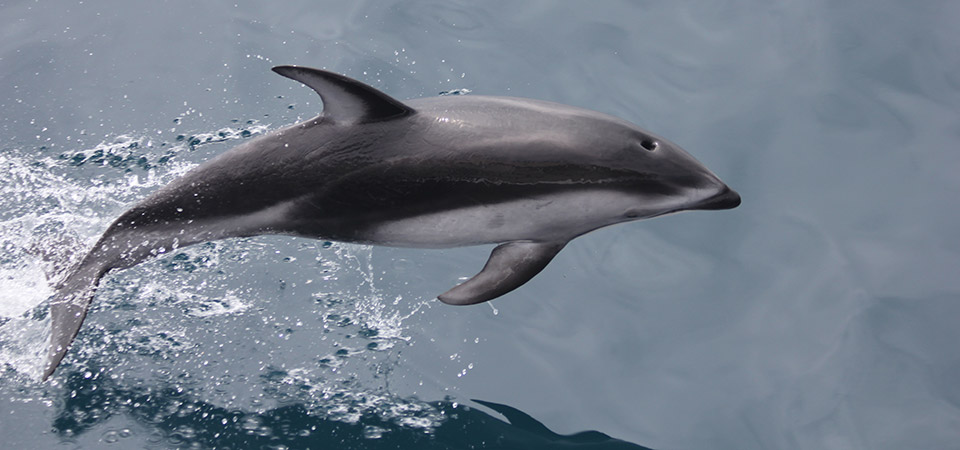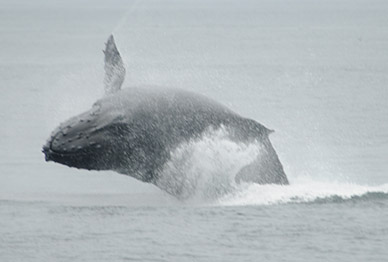Marine Mammals

Cordell Bank National Marine Sanctuary has diverse and abundant marine mammal species including 13 species of cetaceans (whales, dolphins and porpoises) and five species of pinnipeds (seals and sea lions). Pacific white-sided dolphins are the most frequently sighted marine mammal in the sanctuary. Other common cetaceans observed include Dall's porpoises and northern right-whale dolphins. Endangered humpback and blue whales are regularly seen in the summer and fall when they visit the sanctuary to feed.
California sea lions are one of the most abundant pinnipeds in the sanctuary from the summer
through early spring, when they are not in their breeding grounds in the south on the
Channel Islands and Año Nuevo. Other mammals seen around Cordell Bank include Risso's
dolphins, northern fur seals, northern elephant seals, Steller sea lions, beaked whales,

Baleen whales, such as humpback and minke whales, feed mainly on krill and small schooling fishes, which are abundant within Cordell Bank's upwelling-driven ecosystem. In contrast, toothed whales and pinnipeds feed mainly on fishes and squid found in the sanctuary.
For more information on marine mammals within Cordell Bank Sanctuary and the research being conducted on this topic, please visit the Sanctuary Integrated Monitoring Network (SIMoN).

